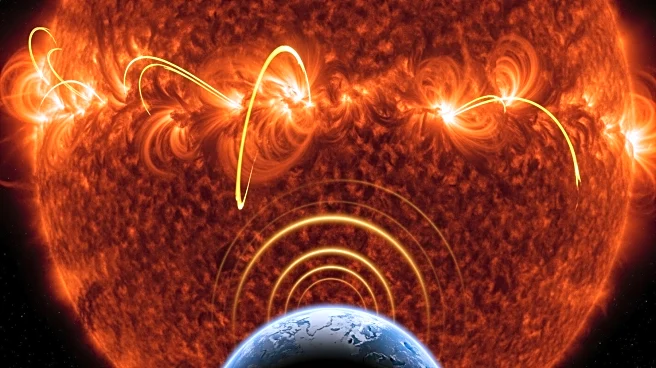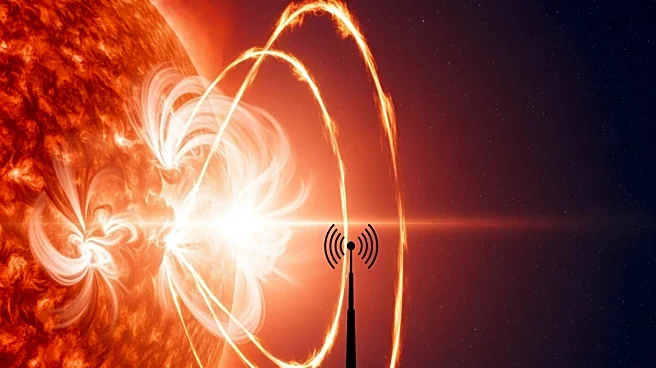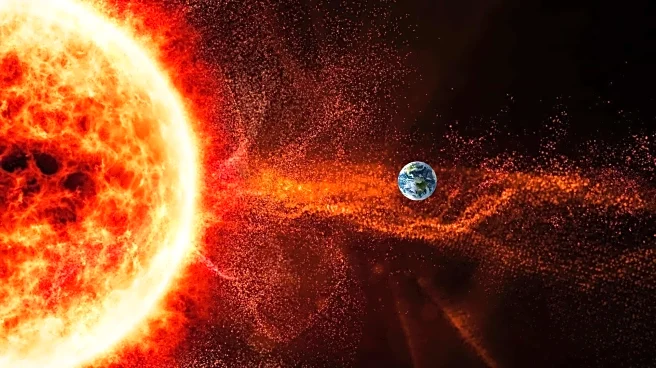What's Happening?
On November 14, the sun emitted a significant X4-class solar flare, marking the second-most powerful solar event of 2025. This flare originated from sunspot AR4274, which had previously produced the year's strongest X5 flare. The flare reached its peak
intensity at 3:30 am EST, causing an R3-level radio blackout on the sunlit side of Earth, particularly affecting central and eastern Africa. A coronal mass ejection (CME) accompanied the flare, but due to the sunspot's position on the sun's edge, a direct impact on Earth is unlikely. Solar flares are categorized by intensity, with X-class being the most energetic.
Why It's Important?
The occurrence of such powerful solar flares can significantly disrupt radio communications and navigation systems on Earth, impacting various sectors including aviation and maritime operations. The electromagnetic radiation from these flares can ionize the Earth's upper atmosphere, leading to communication blackouts. Understanding and predicting solar activity is crucial for mitigating these impacts and ensuring the reliability of technological systems that depend on radio signals.
What's Next?
Space weather experts are analyzing data to assess the potential impact of any CME associated with the flare. While a direct hit is unlikely, even minor CMEs can affect satellite operations and power grids. Continuous monitoring of solar activity is essential to prepare for future events and minimize disruptions.
Beyond the Headlines
The study of solar flares and their effects on Earth is part of broader efforts to understand space weather and its implications for technology and infrastructure. As reliance on satellite communications and GPS systems grows, the need for robust space weather forecasting becomes increasingly important.














